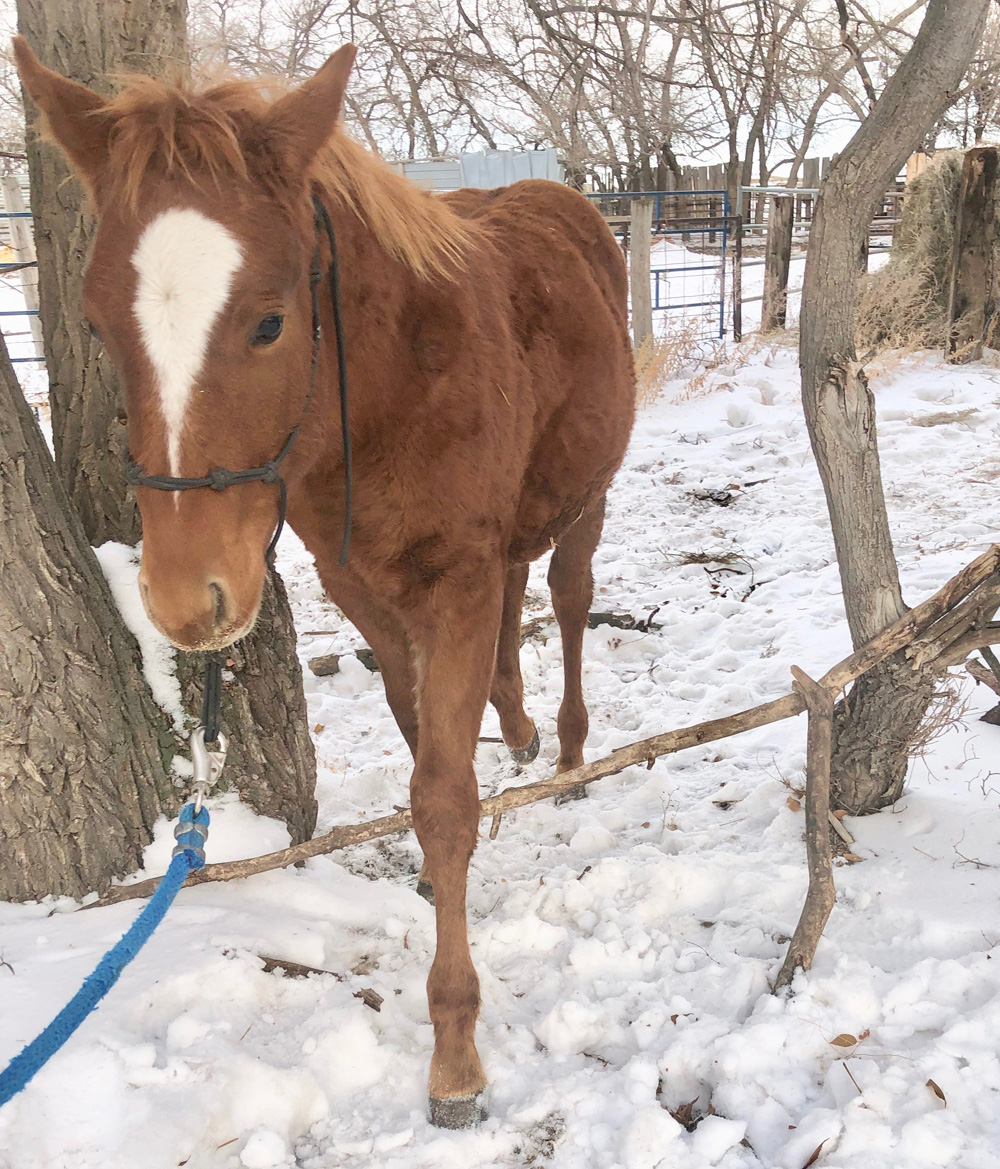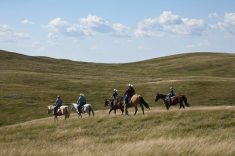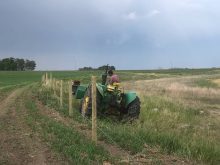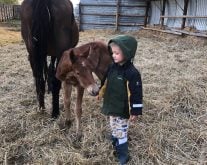In this last part of the four-part series, I’ll cover one more key area of training that helps turn a foal into a useful partner and companion for farm, ranch or recreational use. After teaching a foal to lead, pick up his feet and tie, we teach him to load in the trailer. Most of our foals have been in the trailer with their dam at some point, but loading in the trailer on their own can be very different for them. (You can read Part 1, Part 2 and Part 3 at these links).
There are many different types of trailers and even among the same type, every trailer is different. When teaching a foal to load I try to give them a good enough foundation so that they do not worry about all of the little differences.
Loading in the trailer can be very stressful for a horse. They usually have to step up into the trailer or walk up a ramp. This is not something that they do every day. Another thing that can cause anxiety is the change in light from outside the trailer to inside the trailer. And the confinement of the trailer can also be stressful for some horses.
Read Also

Harvest wraps up and fall work begins
At the Eppich famly ranch in western Saskatchewan, the fall harvest was successful with few breakdowns, cows and calves have been sorted and a new tractor has arrived
I start training my foals to load before they’ve ever seen a trailer. I lead the foal around the yard in order to accustom him to different sights and situations. These exercises help the foal to completely trust the handler. Instead of running away, it begins to want to stay with the handler if it gets nervous and to follow wherever the handler leads.
One thing that I like to do as an early exercise is to lead the foal through the trees. After it starts to willingly follow, I start to place obstacles in the way. I start by putting a branch or a log across the trail. This teaches him to not only to enter a narrow space but also to lift up his feet. This is an introduction to stepping into the trailer.
Horses, being prey animals, are very sensitive to sights. They are even more alert when they can’t quite see something. This is why a horse may hesitate to get into the trailer. The underlying issue with this anxiety is that the horse feels it has to protect itself from whatever may be in that dark trailer. I have found that this particular anxiety can also be minimized through the leading trust exercises, because the horse knows that you would not put it in harm’s way. Leading the foal into a shed or barn can also help it get used to the sudden change in light.

The trailer experience
After I have done lots of different leading lessons, the foal is ready to try the trailer. Each foal is a little different. Some jump right in with me, and some hesitate. Some respond well to grain or treats to encourage them to step up into the trailer, while others do not care at all.
For the foals that are interested, I make sure to use the treats as a reward. I ask for small steps, like first being willing to stand with its head and neck in the trailer, then for an attempt at stepping up into the trailer. Once the foal is in the trailer, I reward it with treats and petting and I keep him in the trailer for a few minutes to make sure he is quiet and calm.
If a foal hesitates at stepping into the trailer and will not try even for a treat, then I use the rump rope. I usually use a lariat at this point so that I can have enough room to work. For my foals, the rump rope is a pressure that they have felt before and so they usually do not get worried or fight at all, but instead jump right in. I only use the rump rope to encourage forward motion with a gentle and consistent pressure until the foal steps forward, or as a way to discourage backward motion.

If a foal gets nervous, it may try to flee. If the foal is trying to run away, it may even pull you out of the trailer which may scare them even more. At this point, the foal will fight the pressure of the halter on its head, at least for a few steps. With the rump rope, I am able to apply pressure to its rump instead of the head. This pressure encourages forward motion, while the pressure on his head may encourage the foal to pull back and fight.
Taking the time to properly train your foal to load in the trailer is well worth it. A foal that will comfortably load in the trailer is a future partner that you will be able to take to any job, in any trailer and in any situation.
















